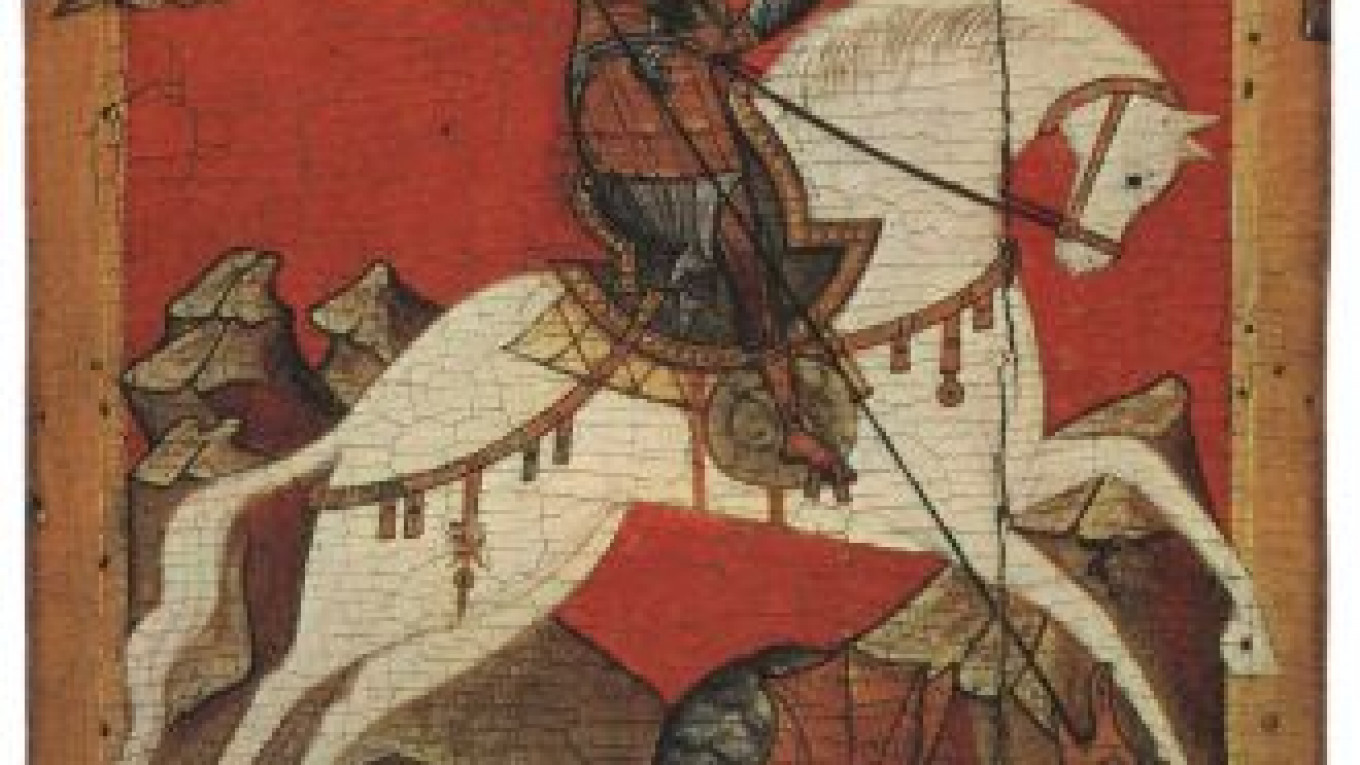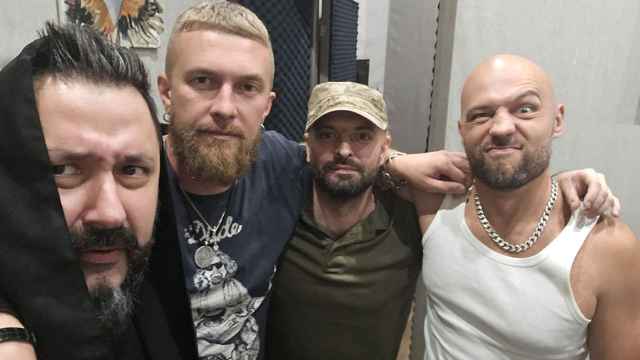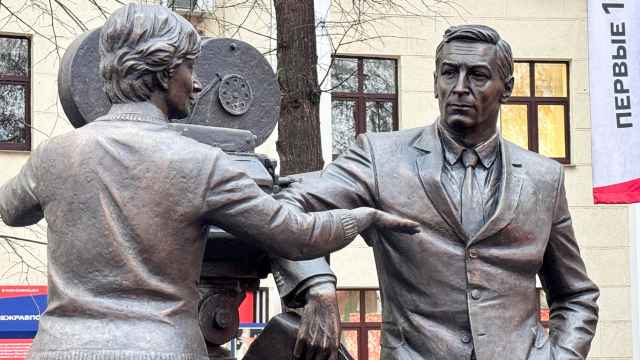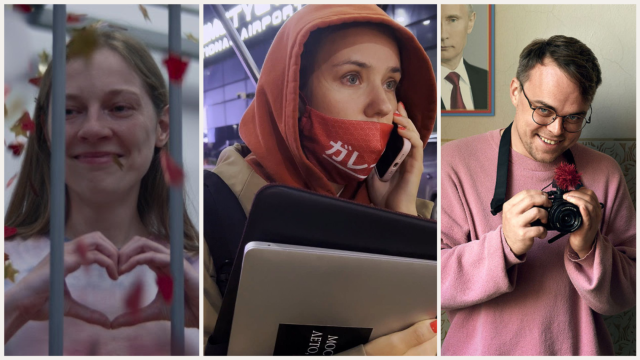President Dmitry Medvedev hailed it as “a brilliant milestone in Russia’s cultural life.” The New York Times called it “the most remarkable show of art from Russia ever staged anywhere.”
Now, one year after its highly publicized premiere at the Louvre, “Holy Russia” — featuring some 450 relics of the medieval Orthodox Rus — finally opens its doors at home.
The exhibition, uniting some of the most precious items from 25 of the nation’s museums, libraries and archives, marks the first time that such a comprehensive collection of 10th- to 19th-century Russian art has ever been displayed within a single space.
“This was a very difficult project, and we are very worried about the well-being of the items on display,” said Irina Lebedeva, general director of the Tretyakov Gallery, where the exhibit will run till Aug. 14 before its last stop at the Russian Museum in St. Petersburg.
“In this sense we must be grateful that the Louvre took on this effort — which we probably would not have risked, and which we might never have the chance to do again,” Lebedeva said.
Due to the age and fragility of the objects, this may be the last time many of them will be presented before the public.
The Louvre’s “Holy Russia: Russian Art from the Beginnings to Peter the Great” was the centerpiece of 2010’s year of Russia in France. Within its three-month duration, it drew about 260,000 visitors.
Medvedev, after attending the opening in Paris, initiated a plan to present the exhibition at home. The result, though nearly identical in material, follows a different conceptual design specifically tailed to the Russian public.
“The Louvre exhibit was oriented toward Western viewers, with the goal of acquainting them with the development of Russian history,” Lebedeva said. “For them, it’s a historical period. For us, it’s not only that. It’s the beginning of our culture.”
The Tretyakov’s showing forgoes the Louvre’s chronological organization. Rather, the material is divided into seven main themes, shaping the concept of “Holy Russia” as “an imaginary model of an ideal social and spiritual world,” Lebedeva said.
Its goal is to immerse the viewer in the overall essence of this ideal, Lebedeva continued. The effect is a somewhat disjointed but visually stunning presentation of Russian Orthodox culture.
Starting with baptism, the exhibition continues through “Light in the Wilderness” and “Heaven on Earth,” themes ranging from the veneration of the Virgin Mary to the relationship between church and state.
The vast array of artifacts resembles a history book come to life: 12th-century birch-bark documents, Byzantine coins, liturgical plates, silk-embroidered shrouds, jewel-encrusted chalices and intricate religious paintings, some up to 700 years old.
Standout pieces include the 600-kilogram Golden Doors from the Cathedral of the Nativity in Suzdal, etched with 13th-century fire gilding, and a massive silver Gospel book cover decorated with a relief of flowers, acorns and fantastic creatures in a style best classified as Russian Baroque.
A significant number of fragile manuscripts, including an illuminated chronicle commissioned by Tsar Ivan the Terrible, have been digitized onto screens that allow viewers to virtually leaf through their pages.
“Holy Russia” may at times overestimate the public’s knowledge. Its themes are randomly ordered, and terms such as “rhipidion” — a fan used to keep flies away from the chalice during Liturgy — and “pyx” — a container for the Eucharist — are left undefined.
But “Holy Russia” provides a valuable aesthetic experience for both informed believers and secular art admirers. It is accompanied by an album and a catalog — and the exhibit’s entire collection, with descriptions and detailed images, is accessible on its web site.
“The information is available, but you have to use it,” Lebedeva said. “Many people just want to come and walk around. But this time, we expect greater involvement on the part of the viewer.”
“Holy Russia” runs till Aug. 14 at the Tretyakov Gallery. 10 Krymsky Val. Metro Oktyabrskaya. Tel. 238-1378, .
A Message from The Moscow Times:
Dear readers,
We are facing unprecedented challenges. Russia's Prosecutor General's Office has designated The Moscow Times as an "undesirable" organization, criminalizing our work and putting our staff at risk of prosecution. This follows our earlier unjust labeling as a "foreign agent."
These actions are direct attempts to silence independent journalism in Russia. The authorities claim our work "discredits the decisions of the Russian leadership." We see things differently: we strive to provide accurate, unbiased reporting on Russia.
We, the journalists of The Moscow Times, refuse to be silenced. But to continue our work, we need your help.
Your support, no matter how small, makes a world of difference. If you can, please support us monthly starting from just $2. It's quick to set up, and every contribution makes a significant impact.
By supporting The Moscow Times, you're defending open, independent journalism in the face of repression. Thank you for standing with us.
Remind me later.






